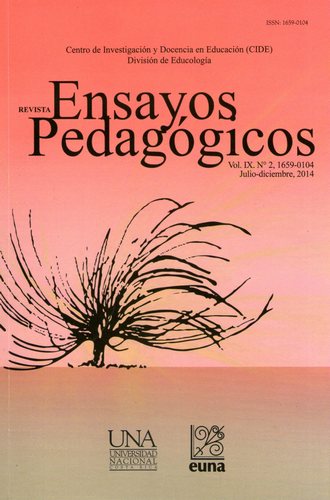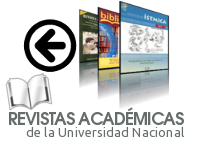Tutorship among Equals: Historical Background and Psychopedagogical Principles
DOI:
https://doi.org/10.15359/rep.9-2.4Keywords:
peer learning, peer tutoring, reciprocal tutoring, cross-age tutoring, same-age tutoringAbstract
This article presents an overview of the historical background concerning literature, conceptualization and typology of peer tutoring and its implications for educational practices. Later reference to specific methodologies using peer tutoring is made, offering a recommendations for implementation in the classroom.
References
Amstrong, S. B., Conlon, M. F., Pierson, P. M. y Stahlbrand, K., (1979). The effectiveness of peer and cross-age tutoring. Ponencia presentada en The Annual International Convention, The Council for Exceptional Children. Dallas, Texas.
Baudrit, A. (2000). El tutor: Procesos de tutela entre alumnos. Barcelona: Paidós.
Bruner, J. (1987). Le développement de l’enfant. Savoir-faire. Savoir dire, París, PUF, Psychologie d’aujourdhui.
Damon, W.; Phelps, E. (1989). Critical distinctions among three approaches to peer education. International Journal of Educational Research, 13: 9-19.
Dochy, F., Segers, M. y Slujsmans, D. (1999). The use of self, peer of co-assessment in higher education: A review, Studies in Higher Education, 24: 331-350.
Downe, A., Altmann, H., y Nisetvold, I. (1986). Peer counseling: More on an emerging strategy, School counselors, 33(5): 355-364.
Duran, (2003). Incidència de la tutoria entre iguals, fixa i recíproca, en alguns factors afectius i relacionals, Suports. 2(2): 114-126.
Duran, D.; Vidal, V. (2004). Tutoría entre iguales: De la teoría a la Práctica. Barcelona: Graó.
Duran, D. y Monereo, C. (2005). Styles and Sequences of Cooperative Interaction in Fixed and Reciprocal Peer Tutoring, Learning and Instruction 15:179–99.
Fantuzzo, J.; King, A.; Heller, R. (1992). Effects of reciprocal Peer Tutoring on Mathematics and Scholl Children. A Component Analysis, Journal of Educational Psychology, 84: 331-339.
Fernández, F. (2007). La tutoría entre compañeros en la Universidad. Tesis doctoral no publicada. Universidad de Granada.
Frenza, M. (1985). Peer Counseling. An Arbor, MI: ERIC Clearinghouse on counseling and Personnel Services. (ERIC/CAPS Fact Sheet No. ED266341).
Gardner, A.; Koholer, M.; Riessman, F. (1971). Children teach children. Nueva York: Harper Row.
Griffin, M. y Griffin, B. (1998). An investigation of the Effects of Reciprocal Peer Tutoring in Achievement, Self-Efficacy, and Test Anxiety, Comtemporay Educational Psychology, 23: 298-311.
Hartup, W.W (1976). Cross-age vs Same-age peer interaction: Ethological and cross–cultural perspectives. In V.L. Allen (Ed.), Children as teacher: Theory and research on tutoring (pp. 41-56). New York: Academic Press.
Lintorn, R. (1973). “The Effects of Grade Displacement Between Students Tutors and Students Tutored”, Dissertation Abstracts International, 33 (8-a): 4091.
Lippit, P. (1976). “Learning Through Cross-Age Helping. Why and How”, En ALLEN, V.: Children as Teachers: Theory and Research on Tutoring. New York: Academic Press.
Mamarchev, H.L. (1981). Peer counseling. Searchlight plus: Relevant resources in high interest areas. Ann Arbor, MI: ERIC Clearinghouse on Counseling and Personnel services. (ERIC/CAPS Fact Sheet No. ED211904).
Martí, E. (1997). Trabajamos juntos cuando....Cuadernos de Pedagogía, 255: 54-58.
Melaragno, R. J. (1976). The Tutorial Community, En V. L. Allen (comp.), Children as teachers: Theory and research on tutoring, 189 -197. Nueva York: Academic Press.
Melero, M.A.; Fernández, P. (1995). El aprendizaje entre iguales: el estado de la cuestión en Estados Unidos, En Fernández, P.; Melero, M.A (comps.): La interacción social en contextos educativos. Madrid: Siglo XXI.
Sánchez, G. (2007). Efecto del Programa de Tutoría entre Iguales “Ritmos en Dos” en el desarrollo de Competencias de Lectura Rítmica Musical. Trabajo de investigación inédito. Memoria para la obtención del D.E.A. Facultad de Psicologìa. Universidad Autónoma de Barcelona.
Sánchez, G. (2009). Efecto del Programa de Tutoría entre Iguales “Ritmos en Dos” en el desarrollo de Competencias de Lectura Rítmica Musical. Tesis doctoral no publicada. Facultad de Psicología, Universidad Autónoma de Barcelona.
Topping, K. (1988). The Peer Tutoring Handbook: Promoting Co-operative Learning. London: Croom Helm.
Topping, K. (1996). Effective Peer Tutoring in Further and Higher Education. Birmingham: SEDA paper.
Verba, M.; Winnykamen, F. (1992). Expert-novice interactions: Influence of partner Status, European Journal of Psychology of Education, 7(1): 61-71.
Downloads
Published
How to Cite
Issue
Section
License
Ensayos Pedagógicos is subscribed to the Attribution-NonCommertial-NoDerivatives 4.0 International Creative Commons Licence, which allows both authors and readers to freely download, store, copy, and distribute the final approved publisehd version of the manuscript (post-print) as long as this is done without commercial purposes, no derivative works are generated, and the source and author are mentioned. As well, Ensayos Pedagógicos declares that authors will remain the rightful owners of the copyrights of their work in perpetuity.







